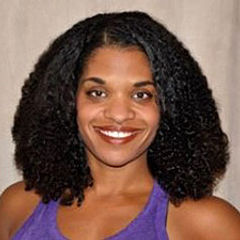Last Updated March 1, 2024 (originally published September 26, 2019)
In 2022, Yoga Alliance conducted the first Yoga in the World Research Study, building on the Yoga in America study they had conducted six years earlier. The 2022 study revealed that there are more people practicing yoga in the U.S. than ever before, with 38.4 million Americans having practiced yoga that year. (Check out the link above for insights about yoga practice around the world.) People take up yoga for a myriad of reasons, but the most popular reason in the U.S. was stress relief/reduction; this is a change from 2016, when the top reason was flexibility. Other popular motivators to start a yoga practice include improving overall health, personal and spiritual development and weight loss.
Not only is the practice of yoga continuing to grow, but the number of registered yoga teachers is on the rise, as well. Today, there are more than 100,000 teachers and more than 7,000 schools registered with Yoga Alliance.
Most practitioners who eventually become yoga teachers don’t start off thinking they will one day teach yoga. Yoga involves the practice of svadhyaya, or self-study. Svadhyaya requires that we contemplate not only our own motives and behaviors, but also our desires and passions. Inevitably, we arrive at the question: “What would make life more fulfilling?” For some practitioners, the answer to this question includes teaching yoga.
Moving from Yoga Student to Yoga Teacher
If you are considering becoming a yoga teacher, you’ll want to spend some time reflecting on the following questions:
-
Why do I practice yoga?
-
Why do I want to teach yoga?
-
What talents and skills do I already possess that will serve me well as a yoga teacher, and what skills do I need to develop?
It is likely that your answers to these questions will change over time, and that is perfectly fine. T. Krishnamacharya was arguably the most influential yoga teacher of the 20th century. His son T.K.V. Desikachar, founder of Viniyoga and author of The Heart of Yoga: Developing a Personal Practice, reminds us that every yoga teacher has something unique to offer. “Yoga is creation. I know the way that you teach will be different form the way I teach, and the way I teach is different from the way my father taught. We all have different experiences, different backgrounds, different perspectives on yoga and why it is important for us.”
Historically, yoga teachers developed over time. The earliest yoga teachers in India were long-time students who studied and practiced under the guidance of a master teacher for years, often decades. Training included not only the study and practice of asana (yoga postures), but also ancient yoga texts and pranayama (mindful breathing). Swami Vivekananda is credited with bringing yoga to the West during his presentation at the World Parliament of Religions in Chicago in 1893. Over the next several years, he traveled the U.S. offering lectures on yoga philosophy. Yoga continued to grow in popularity in the U.S. over the next hundred years.
Yoga Alliance 200-hour Standards
By the mid-1990s, several yoga teachers began discussing a potential need for developing yoga teaching standards. Yoga Alliance was formally established in 1999 following a meeting at the Kripalu Center for Yoga and Health in Stockbridge, Mass. Today, Yoga Alliance is the largest non-profit yoga association in the U.S. Its mission is multifaceted, but Yoga Alliance is perhaps best known for its voluntary teacher registry. All yoga teachers who choose to register with Yoga Alliance have completed a minimum of 200 hours of training through a Registered Yoga School (RYS). The organization supports diversity of both teaching methods and styles of yoga; however, ever RYS must include curriculum across the following five educational categories.
-
Techniques, Training and Practice: Trainees are introduced to teaching concepts related to traditional yoga techniques such as asana, pranayama and meditation. This time is a combination of analytical training and guided practice.
-
Teaching Methodology: During methodology lectures, trainees learn about student communication skills, teaching styles, the qualities of a good teacher, and group dynamics.
-
Anatomy and Physiology: Topics in this area include the application of both physical anatomy/physiology and energy anatomy/physiology (e.g., chakras) to yoga practice. Benefits and contraindications are also covered.
-
Yoga Philosophy, Lifestyle and Ethics for Yoga Teachers: Trainees will study traditional yoga texts and the value in teaching yoga as a service. In addition, they will learn about the yoga lifestyle and ethics for yoga teachers.
-
Practicum: These hours allow the trainee to gain hands-on experience through practice teaching, observing and assisting.
Choosing a Registered Yoga School That Is Right for You
Yoga teacher training can be tremendously rewarding, but is also a commitment. In addition to the financial investment, you will need to devote a significant amount of your time and energy to teacher training. Some schools offer intensive in-person training programs that can be completed over the course of just a few weeks. These trainings require you to clear your schedule of any other commitments for the duration of the program. Other programs are offered one to two nights a week or on weekends and are typically completed in six months to a year. Modular training programs allow trainees to attend weekend workshops at multiple locations and at their own pace. Trainees are often required to complete homework and readings over the course of the teacher training program. Thus, you will need to not only consider the convenience of the training but the amount of time you will be able to allocate to out-of-class assignments. Alternatively, online programs, like the one offered through ACE and described below, are also available. While most 200-hour registered yoga teacher trainings require in-person attendance, online courses provide the flexibility and accessibility to complete the program at your own pace, in your own home.
You will also need to think about the style of yoga you want to teach and who you want to teach. Talk to graduates of the programs you are considering in order to get an idea of how asana, class sequencing and pose adaptations will be presented in the training. To learn more about teaching standards or to search for a specific Registered Yoga School, visit yogaalliance.org.
If you are interested in earning your yoga certification, check out this new course from our partner YogaRenew: YogaRenew 200-Hour Yoga Teacher Training & Certification (worth 20.0 ACE CECs). After graduating from this course, during which you will master more than 50 asanas, learn about meditation and breathwork, and learn to develop fluid and effective yoga classes, you will earn a 200-hour yoga teacher training certificate and be eligible to register with Yoga Alliance as a Registered Yoga Teacher (RYT)-200.




 by
by 








